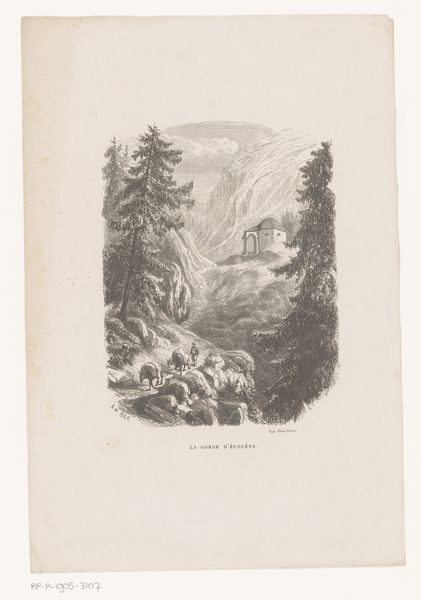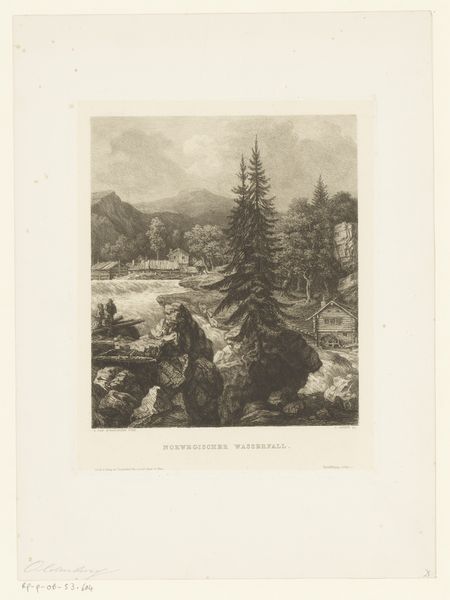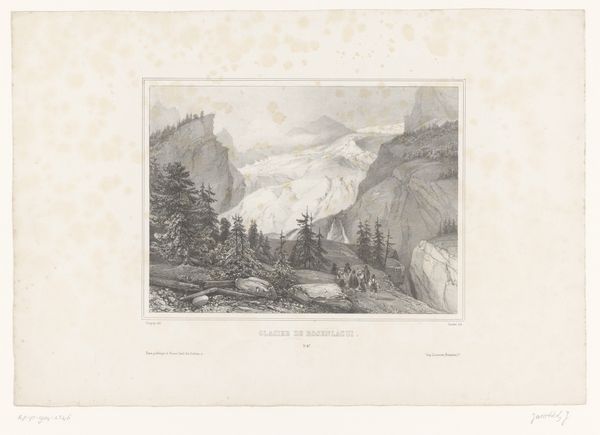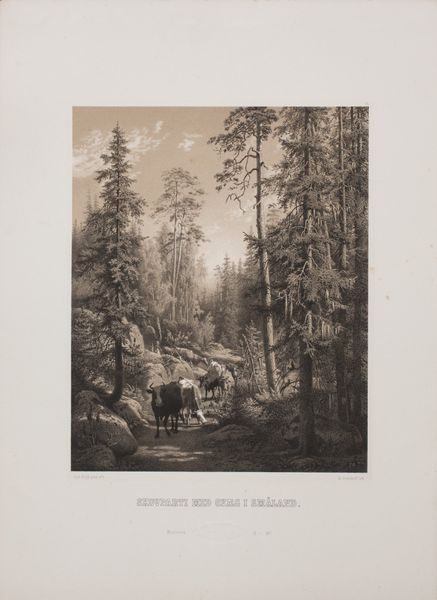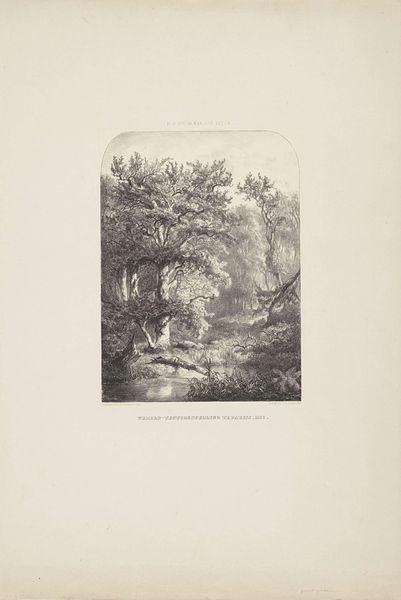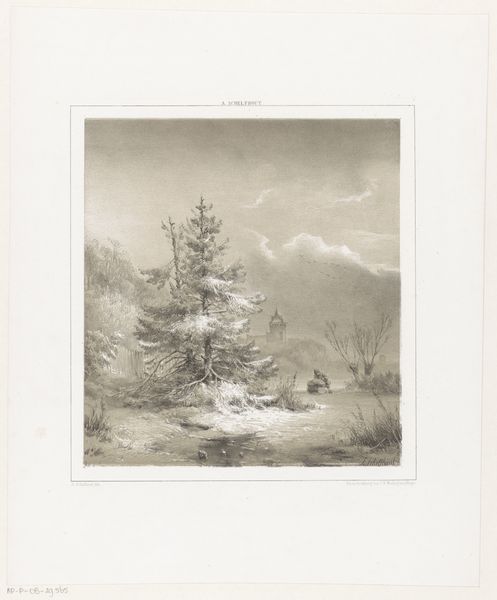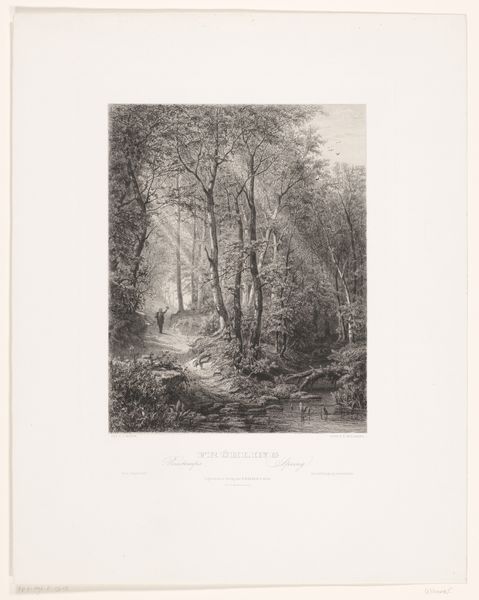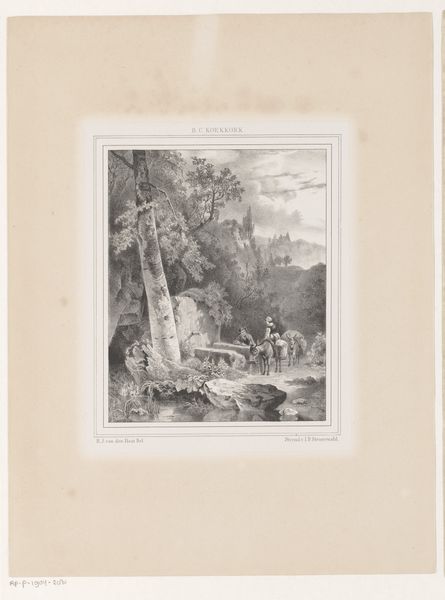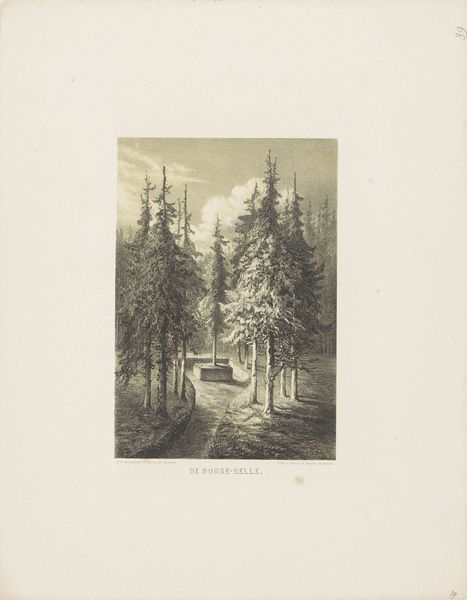
Dimensions: height 422 mm, width 312 mm
Copyright: Rijks Museum: Open Domain
Editor: This is "Winter," an engraving by Eduard Willmann, created sometime between 1842 and 1877. It's a stark, monochrome image of a snow-covered landscape. There's something almost haunting about it. What stands out to you as you examine it? Curator: Immediately, the interplay of light and shadow dictates the form. Note the precise gradations achieved through engraving; the artist masterfully manipulates line density to convey depth. Observe how the strategic placement of darker tones along the right foreground tree draws our eyes deeper into the scene, guided along a visual pathway punctuated by areas of stark white suggesting fresh snow. Editor: So, it's less about what is depicted, but how light and shadow are constructed through the engraving itself? Curator: Precisely. The subject matter, though picturesque, serves as a framework. The engraving technique becomes the primary means of artistic expression. Ask yourself: how does the texture created by the engraving process contribute to the overall mood of the piece? Editor: It makes it feel almost tactile, like you could reach out and feel the coldness of the winter scene. I hadn't really considered how the medium itself shapes the emotion. Curator: Exactly. This understanding allows us to move beyond mere representational reading. We see the artist's hand, their deliberate choices of line and tone constructing not just an image, but an experience. It's about process, form and feeling more than explicit historical meaning. Editor: That's a really helpful way to approach art analysis. Thank you. Curator: It's a constant process of refinement and learning. It requires continual engagement with art as both form and content.
Comments
No comments
Be the first to comment and join the conversation on the ultimate creative platform.

